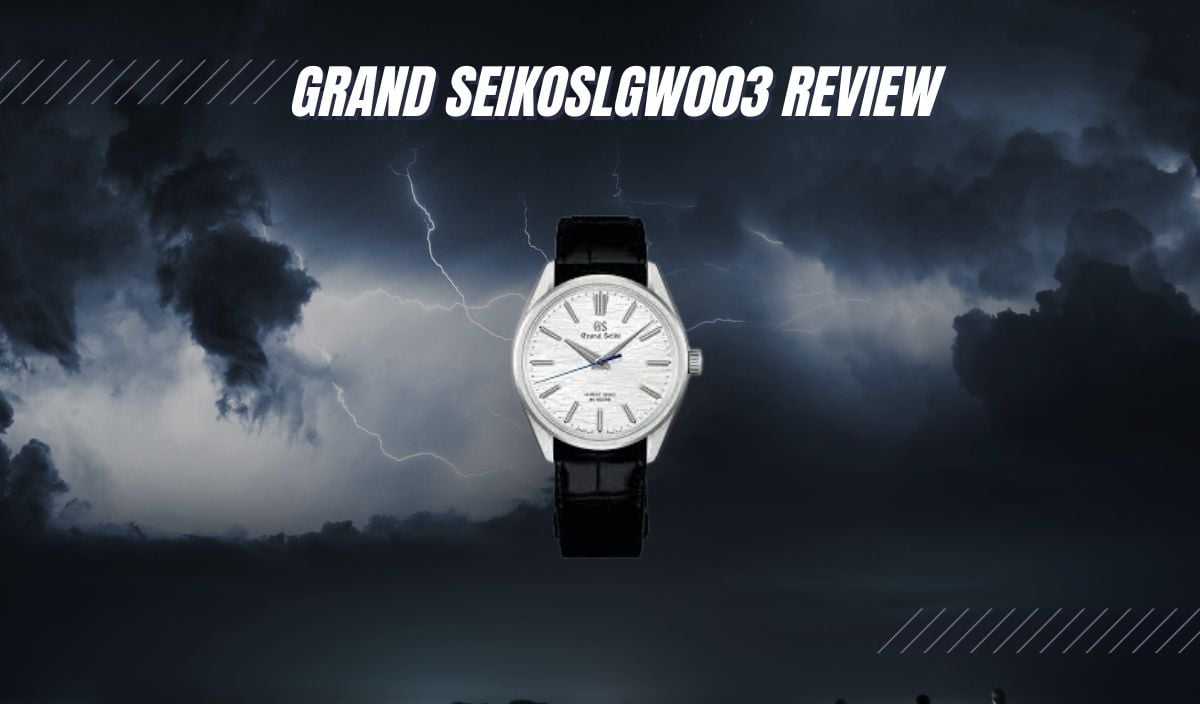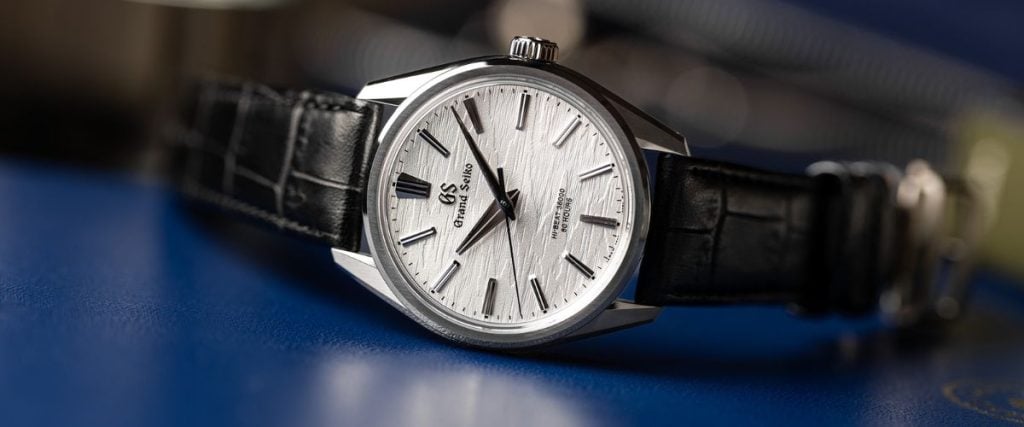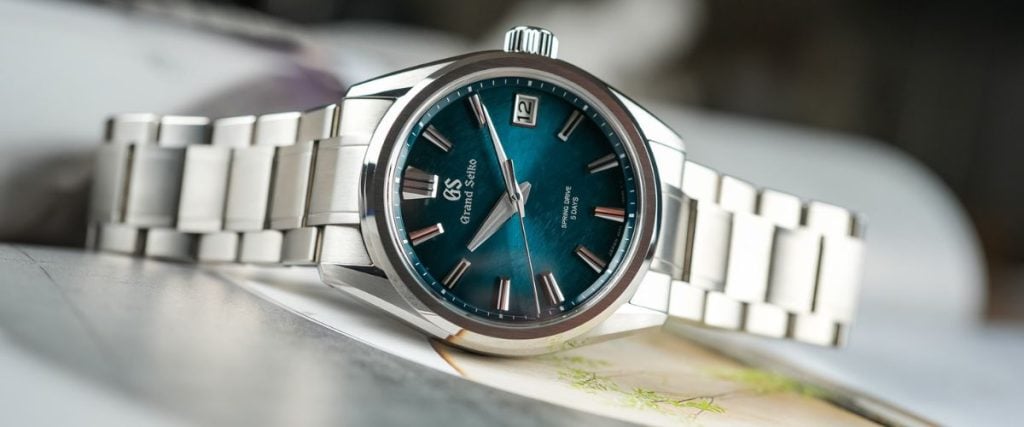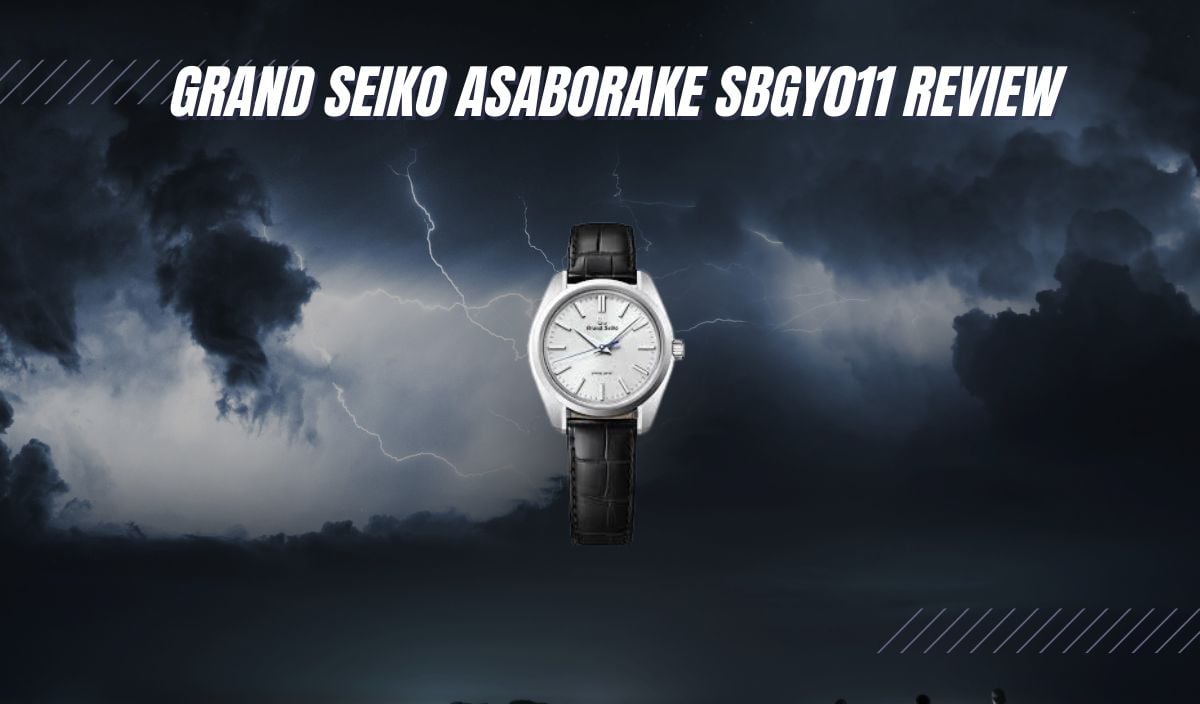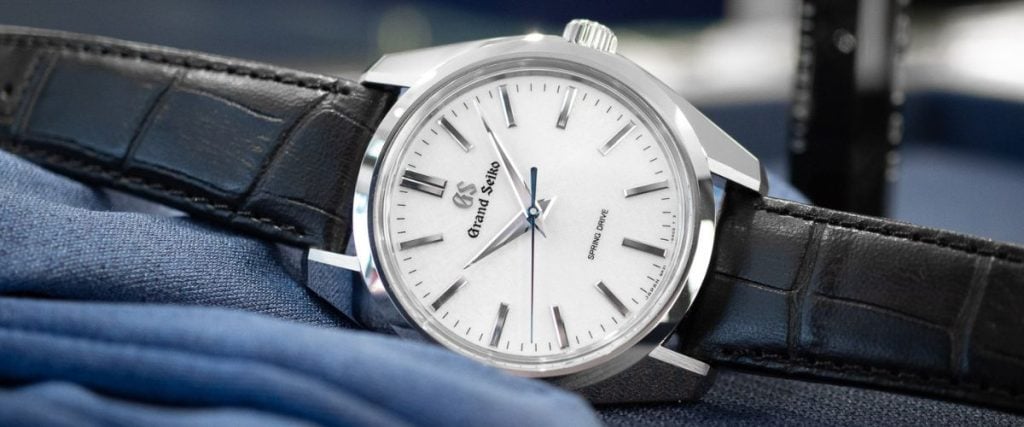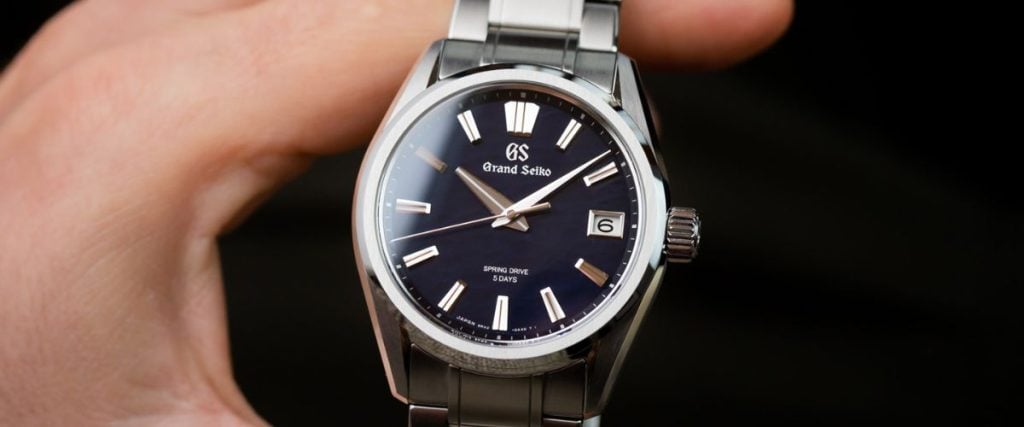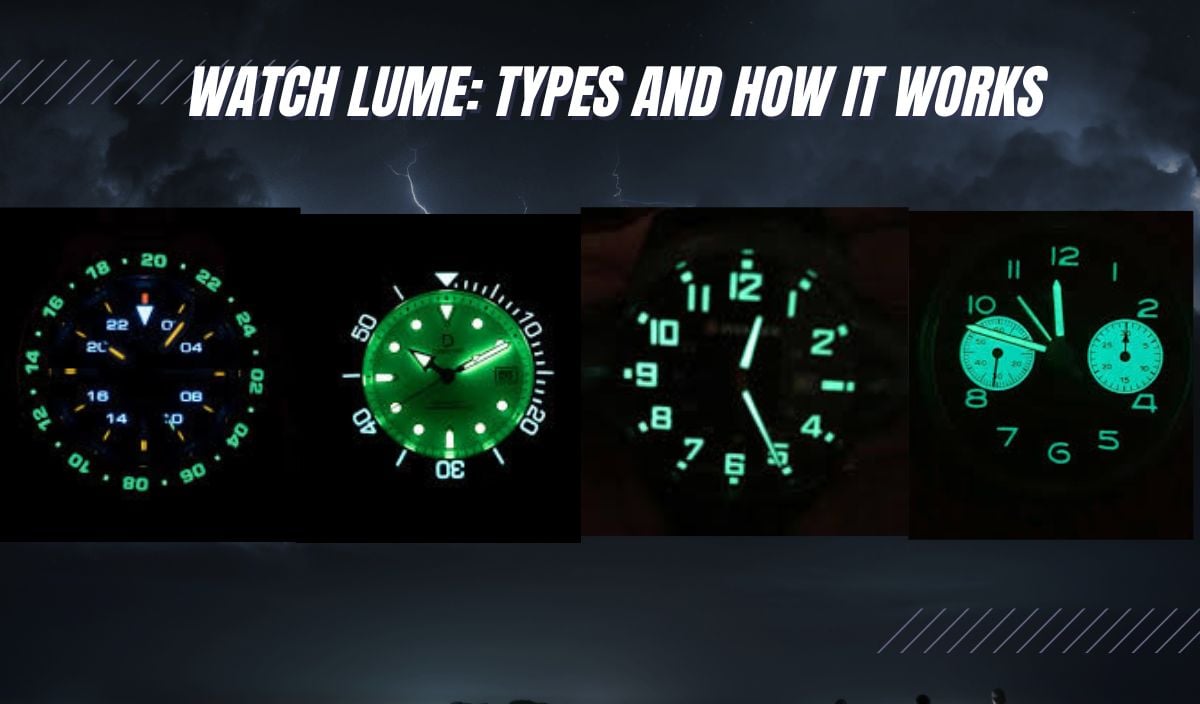
Watch lume is bright, fun, and very useful. It feels like it’s been around forever. In fact, it’s easy to take watch luminosity for granted. But think about how indispensable a material like this would have been in the early days before electricity was a thing in homes!
Back then, all people could do was rely on audible features like those that chimed to tell the time. And even then, you had to be wealthy enough. Sonnaires and minute repeaters weren’t cheap by any stretch of the imagination!
It was the 20th century that birthed the idea of a watch that could be read in the dark. That being said, the road wouldn’t be easy. In fact, watch luminescence has quite a murky back story…
The Shady History of Lume
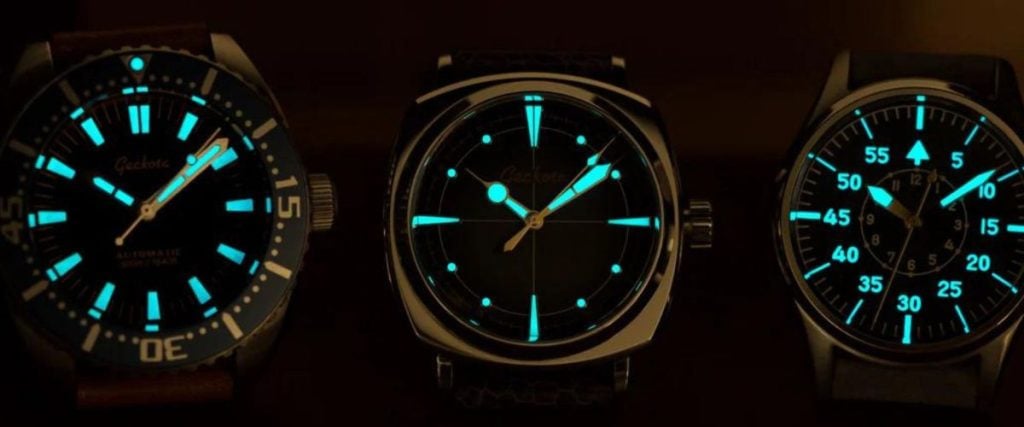
Now, you may have heard of Polish physicist Marie Curie. She was the first and only female to win the Nobel Prize, not once but twice, but she also happened to be the leading chemist in the field of radioactivity.
During her ground-breaking, history-defining work, she discovered two important elements: polonium and radium. The latter was radioactive and is a significant topic to cover when researching the history of watch luminosity. It was the first luminous material to find its way onto wristwatches during the early 1900s.
To emphasize the seriousness of this radioactive element, it’s important to touch on the untimely death of Marie Curie herself, who passed away from symptoms related to prolonged exposure to the one material she revolutionized.
We know of the effects of radioactivity now, but during radium’s heyday in watchmaking, the research simply wasn’t there. Sadly, we’d come to realize the damaging effects of this material on human health over time, but not before it was too late.
Ironically, as is the case with many harmful chemicals, we once thought radium was good for us. Can you imagine? Just like smoking cigarettes, initially advertised as a relaxant and a healthy lifestyle choice – radium was historically considered an enhancement to human health rather than a hindrance.
Radium hair treatments were sold during the 1920s as luxurious products to indulge in, and those working in watchmaking facilities who were tasked with the job of applying radium to watch dials knew no better at the time.
Named “The Radium Girls”, these female technicians would lick the tip of their paintbrush to achieve a finer point for radium application on the more delicate elements of a watch dial or clock display.
Sadly, over time, watchmakers began realizing the effects that prolonged exposure to radium had on human health. The Radium Girls would experience several horrific symptoms such as their teeth falling out, pain around their face and head, and fatigue.
Long-term exposure to the luminous material would even cause ”Radium Jaw” where the jawbone would weaken to the point at which it would crumble. These weren’t the only devastating side-effects of working with radium, either. Many women would go on to suffer from cancer.
Industry giant Rolex was using radium before the 1950s, right up until around 1963. The brand is a great example to research if you want to follow the evolution of watch lume in chronological order and visually see how watchmakers have adapted to the changes in luminous material over the decades.
Between the mid-1960s and up to around 1997, Rolex switched from radium to tritium (another material we’ll cover in detail shortly) before moving onto Super-LumiNova (naming it Chromalight). One reason for the switch to the more recent Super-LumiNova material was down to tritium’s short shelf life.
The material would only last for around 12 years and would begin developing a patination that connoisseurs didn’t like. Ironically, the old radium-style luminosity and faded tritium dials are now a desirable feature in a watch, which many enthusiasts will pay considerable money for.
Since Super-LumiNova joined the scene in around 1997-1998, there have been a handful of iterations of the material. Several brands have created their own version of Super-LumiNova. Examples include Rolex’s proprietary Chromalight material and Seiko’s Lumibrite. Oh, and one other thing – Super-LumiNova isn’t radioactive at all, hence its popularity!
How does Watch Lume Work
Lume is the term given to the luminescent material used on a watch dial to make it glow in dark conditions. It’s an integral feature for any tool or sports watch since it serves a very practical purpose, guiding the way to accurate, legible timekeeping when you may need it most.
It, therefore, goes without saying that watch lume is particularly important for those who wear their watch to work at night or for outdoor exploration in particularly challenging conditions and harsh environments. The debate surrounding which brand offers the strongest lume is ongoing, but what we do know is how it works.
Since there are different forms of watch lume, how it works depends on whether you’re looking at photoluminescent material, electroluminescent material, or tritium gas tubes.
While photoluminescent material absorbs light energy and emits a glow, electroluminescence is what you’ll likely see on the backlight of a digital or ana-digi watch. We’ll go through the various types of watch lume in this article and identify how each one differs from the other.
What is Radium?
As mentioned, one of the revolutionary breakthroughs in luminescent material on watch dials came about during the time of the First World War. Soldiers began replacing their pocket watches with wrist-worn instruments and needed to depend on something concise and clear. Flashlights were forbidden since they would instantly give away a hidden location—cue luminous watch dials.
One of the first examples of a radium watch dial was the Radiomir watch developed by Florentine-based watchmaker Panerai. The Parisian company specialized in diving gear and precision instruments for the Italian Navy.
The material in question was made from radium bromide, zinc sulfide, and mesothorium. After the hazardous effects of radium became common knowledge, however, the industry turned its attention to something safer. Tritium.
Today, the Radiomir watch by Panerai is still going strong, albeit without the harmful effects of radioactive material splashed all over its dial. Panerai combines Super-LumiNova features with a dial design that strays very little from the original and equips these watches with impressive power reserves (some of which last for up to 8 days).
The Panerai Radiomir Black Seal 3 Days PAM00505 is a great example of a watch that fuses modern materials and technology with a classic, vintage-esque charm. For example, the Arabic numerals at the cardinal points on the dial are all finished in a beige-colored Super-LumiNova. This gives the watch an old-radium charm and a character that collectors adore.
Enter Tritium
Before we talk too much about Tritium, it’s worth mentioning a material called Promethium. Promethium played an integral role in the evolution of watch lume, even though it’s rarely mentioned or recognized in industry dialect today.
Promethium replaced radium for a short period of time as a safer alternative. Yet, this less-radioactive material had a much shorter lifespan than the former. Promethium only lived for around two and a half years.
When you compare this to radium’s 1600 years of life, you can soon see why this material never came close to the reliability and legibility of radium. Still, it didn’t cause people’s teeth to fall out and certainly carved a road for tritium.
Tritium (H-3) was used directly on the surface of watch dials until the mid-1990s, and there were several pros and cons to using it as a luminous material. Firstly, it offered a better lifespan than Promethium. Tritium could last for around 12.5 years as opposed to Promethium’s 2.5 years.
Sounds great, right? But there’s a downside. This material wasn’t entirely safe. Tritium is a beta-emitter. It’s safer than radium, but it’s still a radioactive isotope of Hydrogen, which, as a paint, had a way of seeping through the plastic caseback and diffusing through to the wearer’s skin.
To overcome this, brands began replacing the paint with gaseous tritium light sources. Ever heard of Ball Watch Company’s Light Emitting Technology? Right! So, these tightly sealed tubes safely store tritium and contain a phosphorus powder coating on the inside, which reacts with tritium when it releases electrons.
Ball’s luminous technology is second to none in the field of luminous gas tubes. They’re small, precise, and lightweight. The company produces them using a CO2 laser before meticulously positioning them into place.
Perhaps no Ball Watch showcases the manufacturer’s expertise in this light tube technology more than the Engineer III Marvelight Chronometer Meteorite watch. The steel model, complete with a matching steel bracelet and a sapphire crystal glass front, is an automatic three-hander with rainbow-colored gas tubes that illuminate the hour markers and hands in dark conditions.
If the meteorite dial wasn’t enough of a unique feature alone, the orange, pink, blue, green, and yellow indices put on a spectacular show after dark. With 100-meter water resistance and antimagnetic capabilities that protect the watch from up to 80,000 A/m, the Engineer III is a watch that has so much more going for it than the luminosity of its dial alone.
Still, you can’t deny that the powerful presentation of those rainbow hour markers is certainly the star of the show at nightfall.
Photoluminescence: Super-LumiNova
Super-LumiNova actually takes its name from the brand that founded it back in 1993. The material is made up of strontium aluminate and photoluminescent pigments that are mixed together to form a non-toxic, luminous paint that glows beautifully in the dark.
It differs from the tritium-filled gas tubes you see on a Ball watch since the latter is more a chemical reaction that causes a continuous glow, day or night. Super-LumiNova, however, glows at a level of brilliance that is unmatched but for a period of time only and creates an eye-catching spectacle that you can observe in any low-light environment.
If you consider yourself a modern watch collector, you’ll have heard the term Super-LumiNova creep up in conversations or even seen it listed in the spec details of most watches online. Super-LumiNova is a photoluminescent material, which means it absorbs light before emitting a long-lasting, brilliant glow.
It succeeded the former LumiNova material, which became the go-to material to use after tritium. Surprisingly, the material was first discovered back in the 1960s and was used in cathode ray tubes. However, it was much later before the watch industry embraced the fluorescent qualities of LumiNova.
This non-radioactive substance poses no threat to human health, making it a no-brainer for modern tool watches. The only downside to Super-LumiNova is that it needs to be charged with sufficient light before it will glow for a limited period of darkness.
Therefore, if a watch is left in a dark drawer, it will need charging before you can expect to see a gleaming dial at night. Its intensity also decreases over time once charged. The material’s quality and the light source’s intensity determine how well a dial stays illuminated, especially since the duration of a Super-LuiNova-coated dial can vary from half an hour to 15 hours.
One of the key advantages of Super-LumiNova is that it can charge and recharge an unlimited amount of times and share no wear and tear. Unlike radium and tritium, which degrades over time, this more modern material has a much longer lifespan. It’s also available in a plethora of different colors!
Of course, one of the most common variations of Super-LumiNova is Seiko’s Lumibrite material, which is widely featured throughout the brand’s dive watch range. Entirely safe for humans and based largely on the more famous Super-LumiNova material, Lumibrite contains zero toxic ingredients and is free from radioactive substances.
Since it works in the same way as the more common LumiNova, Lumibrite effectively absorbs light and then stores it before radiating a strong and impressive glow that can last up to 5 or 6 hours or more.
The Seiko Prospex Alpinist is one of the brand’s most collectible adventure watches, with a history intrinsically linked with alpine pursuits. In 2020, it became part of the Prospex collection, with models like the SPB121 now representing some of the brand’s finest examples.
This model reimagines the original 1951 sports watch with an inner rotating compass, robust steel case, scratch-resistant sapphire crystal, Lumibrite hour markers, and cathedral hands.
Electroluminescence; a Glow with an Electrical Flow
So, we know that photoluminescent materials absorb light energy before emitting a rich glow. Electroluminescence is when light is produced as a result of an electrical current passing through a phosphorus material.
In watches, an electric conductor-coated plastic or glass panel is mounted behind the dial, and when a button is activated, it delivers an electrical current. The phosphor reacts and acts as a backlight. One of the most common examples of this technology can be found in Timex’s famous Indiglo watches, but other affordable watch companies use it, too, like Casio.
The rugged Casio G-Shock Mudmaster is an ana-digi watch with bucket loads of wrist presence thanks to a powerful 52mm resin case.
Rugged and durable, its robust exterior packs a whole load of functionality into the wrist, including double LED lights, a Location Indicator feature, 200 meters of water resistance, solar power charging, and features that also measure altitude and barometeic pressure.
Additional features include a mission log, world timezones, phone finder, alarms, and, of course, a backlight, combined with luminous material on the analog details for traditional timekeeping.
Watch Lume – Just How Important Is It?
You only need to watch a YouTube video or two to see just how ga-ga collectors go over a watch with lume. You’ll see shots of it completely in the dark for full effect, while watch modders may even try their hand at painting it on a dial if they’re feeling extra adventurous.
Considering Super-LumiNova is no more than the horological version of glow-in-the-dark paint, it’s only natural to question why enthusiasts love it so much. But they do, and that’s partly to do with how important it is on a functional level.
Admittedly, when a watch dial is fully charged, a Super-LumiNova watch has a captivating effect on its wearer, especially if done right. So, you can imagine the appeal of a fully lumed dial. The likes of Bell & Ross, DOXA, IWC, TAG Heuer, and Zodiac have all dabbled in this field. Heck, even affordable solar-power specialists Citizen have dipped their toe in fully lume dials!
But whether a fully-coated dial or not, you’re always going to want to read the time in the dark. Case in point, there is always a need for lume on a practical watch, but should it always be a deliberate consideration?
Absolutely not. Even the geekiest of watch lume nerds will agree that there is a style and a design that calls for Super-LumiNova, and it would certainly look out of place on an elegant 18k dress watch.
Conclusion
Sometimes, it can feel like manufacturers are just ticking a box when adding features like Super-LumiNova to a watch, but as long as a timepiece is the sporty, functional, practical type – it will always serve a useful purpose.
Being able to read the time while hundreds of meters under the ocean’s surface, while out fishing at night, while mountain climbing, cave exploring, or navigating the skies in the dead of night – watch luminosity will always have a place on the dial of a good quality tool watch.








